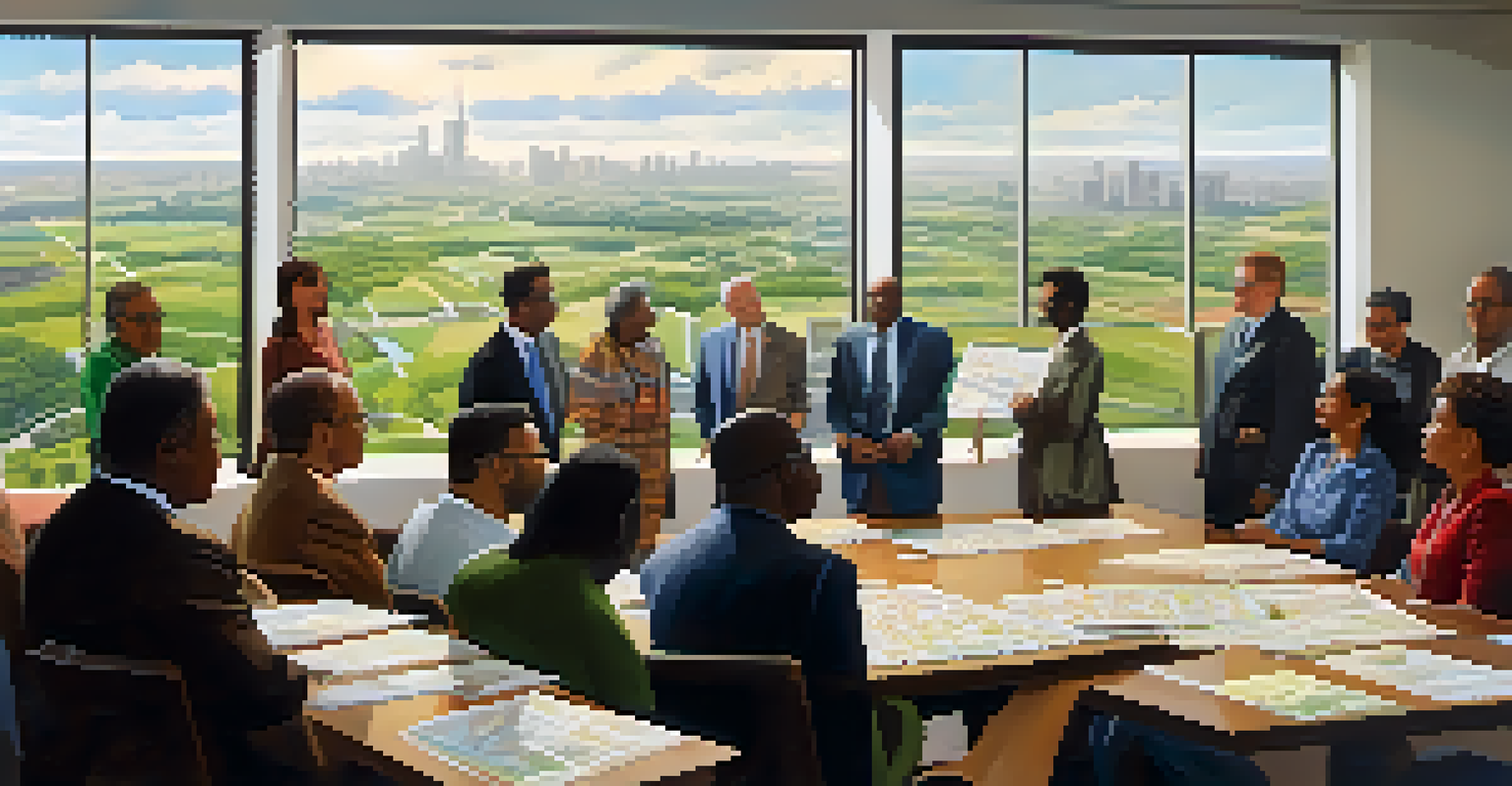The Impact of Urbanization on Rural Communities

Understanding Urbanization and Its Scope
Urbanization refers to the increasing population shift from rural to urban areas. This phenomenon is driven by factors such as job opportunities, better living standards, and access to services. As cities expand and develop, they often attract individuals seeking a more prosperous lifestyle.
Urban areas are the engines of economic growth, but they must not neglect the rural communities that support them.
However, this growth does not come without consequences. While urban areas flourish, rural communities may feel the weight of this migration, leading to shifts in demographics and economic viability. Understanding this balance is crucial in assessing the overall impact on society.
Cities may thrive, but the rural areas left behind can experience challenges, such as declining populations and reduced economic activity. The relationship between urban and rural spaces is complex and requires ongoing analysis to fully grasp its implications.
Economic Effects on Rural Communities
As urban areas grow, rural communities often face economic strain. Many local businesses struggle as former residents migrate to cities, taking their spending power with them. This exodus can lead to reduced job opportunities and less investment in rural infrastructure.

Furthermore, the shift in population can alter the local economy's structure. For instance, agricultural sectors may suffer as fewer hands are available to work the land, leading to decreased production. Consequently, this can make rural economies less resilient and more vulnerable to external shocks.
Urbanization Strains Rural Economies
As people migrate to cities for better opportunities, rural communities face economic challenges, including declining businesses and job opportunities.
Despite these challenges, some rural areas are finding ways to adapt. This includes promoting local products and services or attracting tourism, which can invigorate the economy. Still, the struggle remains as rural communities aim to balance their unique identities with the demands of a changing economic landscape.
Social Impacts of Urbanization on Rural Life
The social fabric of rural communities often changes dramatically due to urbanization. As people move away, tight-knit communities may feel fragmented, resulting in a loss of social cohesion and support networks. This can lead to feelings of isolation among those who remain.
In a world where urbanization is inevitable, we must strive to preserve the unique cultures and identities of our rural communities.
Moreover, the cultural identity of rural areas can be threatened. Traditional practices and local customs may fade as younger generations migrate to cities, seeking new opportunities. As a result, a cultural homogenization can occur, diminishing the uniqueness of rural life.
On the flip side, some rural areas are actively working to retain their culture by promoting local heritage and community events. These efforts aim to foster a sense of belonging and pride, showcasing the value of rural existence amid the urban tide.
Infrastructure Development and Challenges
Urbanization often leads to significant infrastructure development, but rural areas can lag behind. While cities receive investments in transportation, healthcare, and education, rural communities may struggle with outdated facilities and services. This disparity can create significant challenges for residents.
Poor infrastructure can affect everything from access to jobs to healthcare services. For instance, individuals in rural areas may have to travel long distances for medical care, which can be a barrier, especially for the elderly or those without reliable transportation.
Social Changes in Rural Communities
The migration to urban areas can fragment tight-knit rural communities, leading to a loss of social cohesion and cultural identity.
However, there is hope as some regions engage in grassroots efforts to improve local infrastructure. Collaborations between community members and local governments can lead to better roads, improved public transport, and enhanced services, helping to bridge the gap created by urbanization.
Environmental Consequences of Urban Expansion
The rapid expansion of urban areas can lead to significant environmental consequences for surrounding rural communities. As cities grow, they often encroach upon agricultural land, leading to a loss of arable space. This not only affects food production but also disrupts local ecosystems.
Moreover, urbanization can lead to increased pollution and resource depletion. Rural areas may experience the effects of urban waste and runoff, which can contaminate local water supplies and soil quality. These environmental challenges can have long-lasting repercussions on rural health and sustainability.
However, some rural communities are adopting sustainable practices to counteract these effects. Initiatives like organic farming and conservation efforts can help preserve the environment while promoting local economies. Such approaches illustrate the potential for harmony between urban growth and rural preservation.
Educational Opportunities in Transitioning Regions
Urbanization often brings enhanced educational opportunities, which can be both a blessing and a curse for rural communities. While urban areas may offer a wider range of educational institutions and resources, rural areas can face declining school enrollment as families relocate.
This decline can lead to school closures, reduced funding, and limited access to quality education for those who remain. It becomes a cycle where fewer students mean fewer resources, ultimately impacting the future prospects of rural youth.
Infrastructure Gaps in Rural Areas
While urban centers often benefit from significant infrastructure development, rural areas may struggle with outdated facilities and services.
Nevertheless, some rural areas are beginning to innovate. Online learning and partnerships with urban educational institutions can provide access to quality education, bridging the gap between urban and rural schooling. These adaptations show that even in the face of change, opportunities for growth and education can still thrive.
Finding a Balance: Urban and Rural Integration
The key to navigating the challenges of urbanization lies in finding a balance between urban and rural needs. Policymakers and community leaders must recognize the interdependence of these areas and work towards integrated solutions. This approach can help ensure that both urban growth and rural vitality coexist harmoniously.
For instance, fostering partnerships between urban and rural businesses can create economic synergies, benefiting both communities. By investing in infrastructure and resources that support rural areas, cities can help alleviate some of the burdens caused by urbanization.

Ultimately, the goal is to create a framework that supports sustainable development across all regions. By embracing collaboration and innovation, we can help rural communities thrive even as urbanization continues its march forward.